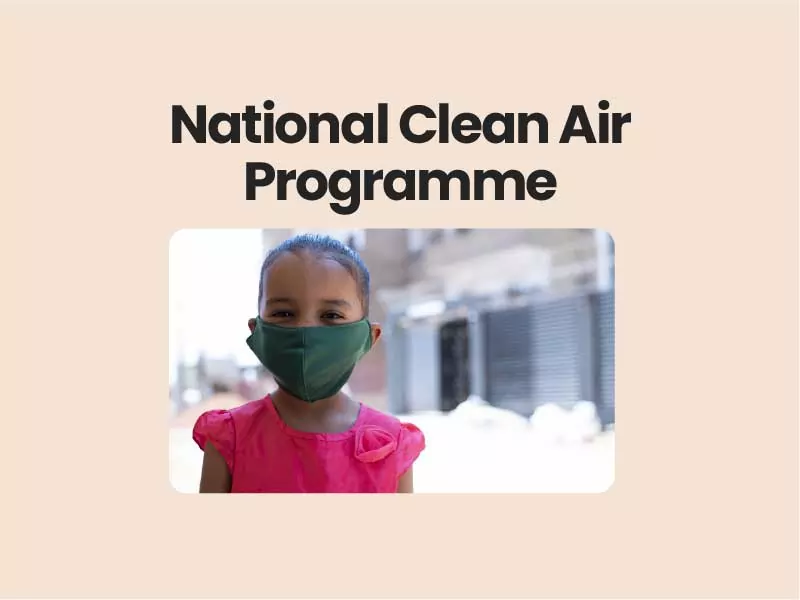
National Clean Air Programme (NCAP)
Air pollution is one of the biggest global environmental challenges of today. A time-bound national-level strategy for pan India implementation to tackle the increasing air pollution problems across the country in a comprehensive manner in the form of National Clean Air Programme (NCAP) was launched by Union Ministry of Environment, Forest and Climate Change.
Focus:
- A collaborative and participatory approach involving relevant Central Ministries, State Governments, local bodies and other Stakeholders with focus on all sources of pollution.
- Comprehensive mitigation actions for prevention, control and abatement of air pollution besides augmenting the air quality monitoring network across the country and strengthening the awareness and capacity building activities.
“Today cities occupy just 3% of the land, but contribute to 82% of GDP and responsible for 78% of Carbon dioxide emissions; cities though are engines of growth and equity but they have to be sustainable and it is in this context that NCAP being a very inclusive program holds special relevance.”-CEO NITI AYOG
Key features of the National Clean Air Programme (NCAP):
- A five-year action plan with a tentative target of 20-30% reduction in concentrations of PM10 and PM2.5 by 2024, with 2017 as the base year.
- City-specific action plans are being formulated for 102 non-attainment cities identified for implementing mitigation actions under NCAP (The non-attainment cities are those that have fallen short of the National Ambient Air Quality Standards (NAAQS) for over five years.
- Sectoral working groups, national level Project Monitoring Unit, Project Implementation Unit, state-level project monitoring unit, city level review committee under the Municipal Commissioner and DM level Committee in the Districts are to be constituted under NCAP for effective implementation and success of the Programme
- As part of the programme, the Centre also plans to scale up the air quality monitoring network across India. At least 4,000 monitors are needed across the country, instead of the existing 101 real-time air quality (AQ) monitors, according to an analysis.
- The plan proposes a three-tier system, including real-time physical data collection, data archiving, and an action trigger system in all 102 cities, besides extensive plantation plans, research on clean-technologies, landscaping of major arterial roads, and stringent industrial standards.
- It also proposes state-level plans of e-mobility in the two-wheeler sector, rapid augmentation of charging infrastructure, stringent implementation of BS-VI norms, boosting public transportation system, and adoption of third-party audits for polluting industries.
Major Concerns:
- The MoEFCC, as a nodal central and apex agency, will have to flex its authority to ensure all NCAP indicators are integrated with multi-sector and inter-ministerial programmes to align with the air quality target and objectives.
- NCAP should not become only a top-down prescriptive approach. In fact, within the federal structure, NCAP, while ensuring compliance, will also have to create enough room for tighter action that can be even stronger than the common minimum national programme as defined by NCAP.
- State governments and city authorities should be encouraged and enabled to take those extra steps to meet local targets. City-wise air quality targets will clearly show where much deeper cuts will be needed for hotspot and stronger regional action.
- NCAP will also have to join all critical dots with clarity. For instance, in case of vehicular pollution, the main body of the plan has ignored mobility, transportation and urban planning strategies, though fortunately, the indicative broadsheet of action at the end has listed public transport, transit-oriented development policies, and non-motorised transport. But these will have to be detailed out with clear pathways and milestones and integrated well with the NCAP strategies.
- NCAP will also have to be more nuanced and adopt appropriate approaches for small and big cities according to their dominant pollution profile while several strategies may remain uniform.
The critics say:
- The pollution reduction target in these cities is not ‘legally binding’ on respective states.
- A reduction of merely 20-30% from 2017 level by 2024 will not be sufficient to bring the air quality at the desired level, i.e. the targets under action plan are less ambitious.
Way Forward
- Although the targets appear less ambitious, The NCAP is envisaged to be dynamic and would continue to evolve based on the additional scientific and technical information as they emerged.
- This is a welcome step as it was imperative to have measurable, focused and precise targets with clear timelines and demonstrable accountability towards public health, to succeed in this national-level initiative.
Enroll today with the best civils service academy and take your first step towards yours Civils journey.
Feel free to reach out to us for any inquiries, collaborations, or support. We’re here to help.

